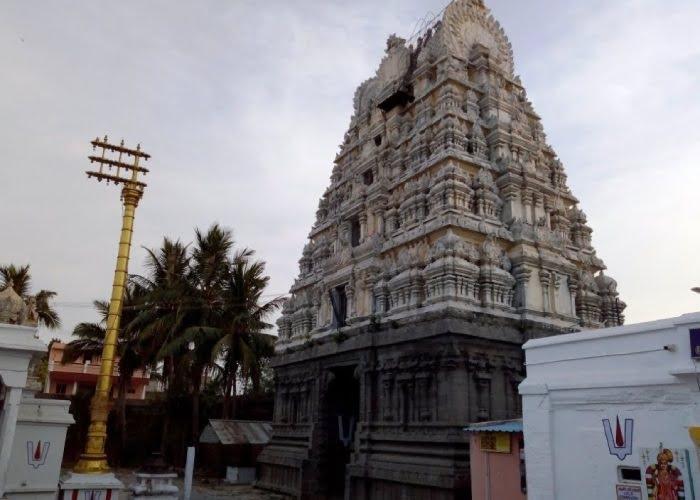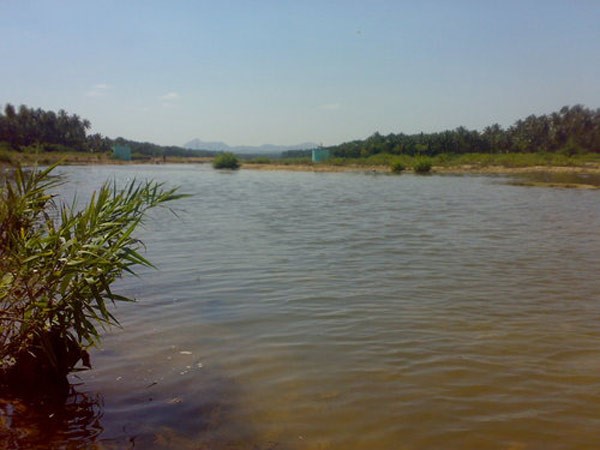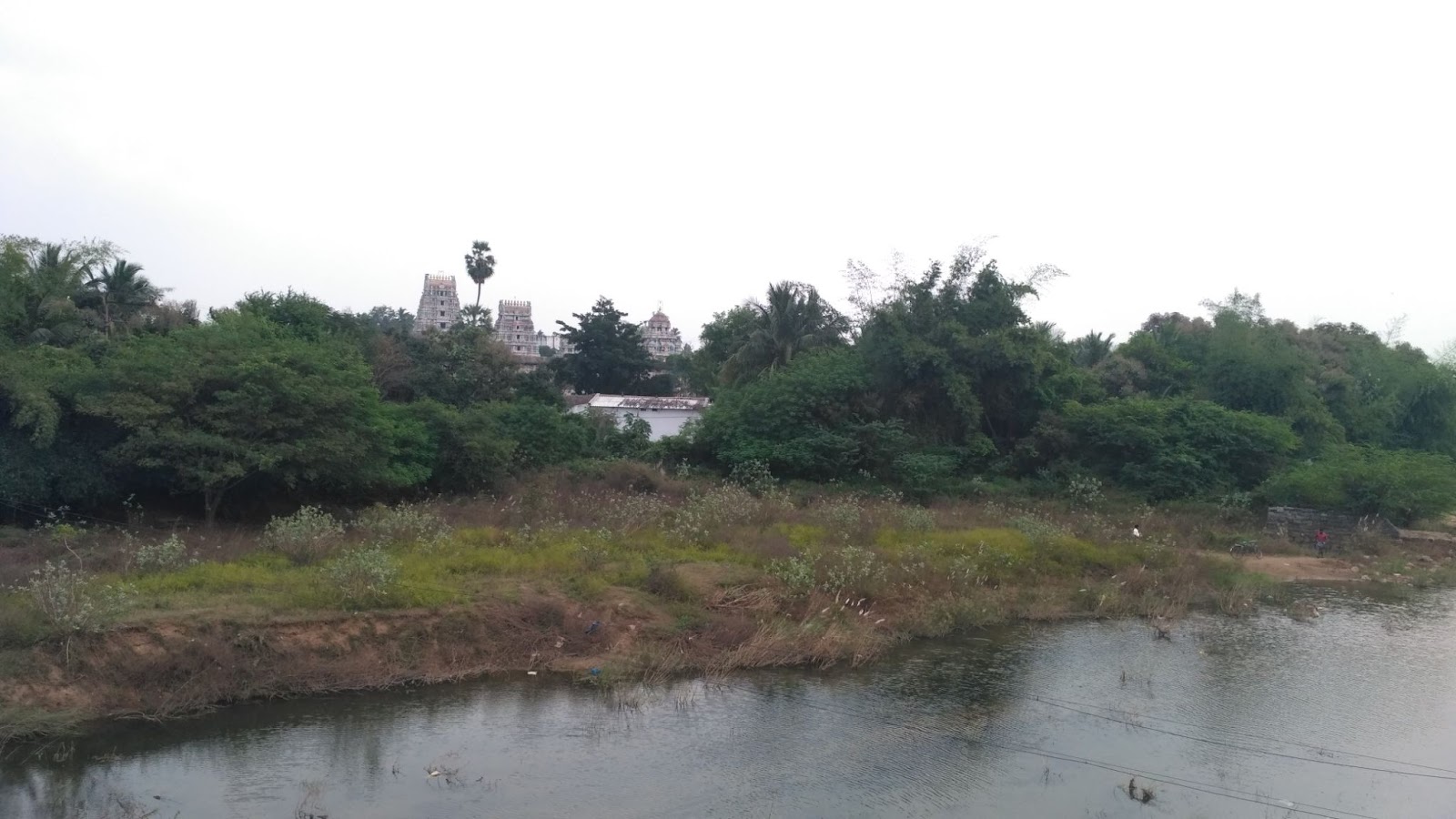- Thiruvekka, Son vannam seitha Perumal temple or Sri Yathothakaari Perumal Temple is located in Thiruvekka, Kanchipuram district, Tamil Nadu state, India.
- The main God here is Yadhothakari Perumal, Sonna vannam seitha and Amman (Thayar) is Komalavalli Nachiyaar .
- This temple is 51st in 108 Divya Desam Koil.
- Thiru Vekka is one of the 108 divya desam temples situated in Kanchipuram.
- The legend behind the place Thiru Vekka goes like this.
- Once there was an argument between Brahma and Saraswathu as to who is greater between Saraswathi and Sri Lakshmi.
- Brahma said that it is Lakshmi Thaayar who is found in the heart of Sri Vishnu is the greatest. Next, Saraswathi asked which river is the big river.
- Brahma answered that the greatest river is River Ganga which originates from the feet of Sri Vishnu .
- On hearing this, Saraswathi got angry and disappeared and went to the banks of river Ganga and started doing Tapas.
- Meanwhile, Brahma wanted to do an Ashwametha Yagam in Kanchipuram. He sent for Saraswathi through his son Vashistan to join him in the Yagam.
- Saraswathi refused to come along with him. Undaunted, Brahma started the Yagam along with Savithri and all of his wives with him.
- On seeing this, the Asuraas wanted to destroy the Yagam and went to Saraswathi and told her about the yagam and the participants. Saraswathi got angry at Brahma and started as the "Vegavathi" river started to gush towards the place of the Yagam to destroy it .
- Sriman Narayana in order to protect the yagam stopped the river by lying across the river on Adhiseshan.
- Because of this, this perumal is also known as "Vaga Sethu".
- This Vega Sethu then became "Vekkanai" , "Vekka" and now called Thiru Vekka.
PURANIC SIGNIFICANCE 1:
- When Thirumizhisai alwar was living in Kanchipuram, a very old lady (Daasi) used to clean his house daily and did this as a small favour for him.
- On becoming happy with the favour she is doing daily to him, Alwar changed her from an old lady to a beautiful woman.
- After this, wondering at the beauty, the king married the woman and she became the queen of the place.
- On hearing the secret of an old lady becoming a beautiful woman, he was in an eager mood to meet Thirumazhisai Alwar.
- Kani Kannan, who was a great follower of Thirumazhisai Alwar, helped and followed him and his teachings.
- The king called up Kani Kannan and asked that Thirumazhisai Alwar should come to his palace and sing a poem praising him.
- On hearing this, Kani Kannan said that all the poems and songs that come from the mouth of Thirumazhisai Alwar belong to Srivaikundanathan and it is impossible for him to come to the palace and sing a poem praising the king.
- On hearing this, he showed lots of gold ornaments, silver items, Diamonds etc to Kani Kannan and since he was very close to Thirumazhisai Alwar, at least he could sing a poem praising him.
- But, Kani Kannan refused to do so and said he will not sing any song praising the humans. The King got angry on hearing this and ordered him to get out of Kanchi at once.
- Kani Kannan went to Thirumazhisai Alwar and explained all about what had happened in the palace and prepared to start getting out from Kanchipuram.
- On seeing this, Thirumazhisai Alwar also prepared to start from Kanchi leaving along with Kani Kannan.
- So, he too started along with him. While they were going, he sung a song on the Yadhothakari Perumal as Kani Kannan is leaving Kanchipuram, he is also going along with him and Alwar asks the Perumal to get up from his Aadhisheshan, which is the bed for him and roll it and wants him to quit from Kanchi.
- The Perumal also got out from Kanchipuram following the Alwar and Kani Kannan. On hearing this, the king and all the people of Kanchi, begged Kani Kannan to return back to Kanchipuram.
- And after this, Kani Kannan along with Thirumazhisai Alwar came back to Kanchipuram. When returning, Alwar sung a song asking that Kani Kannan has returned back to Kanchi and he wants Perumal to go and sleep in his Adhiseshan in the temple.
- On hearing this, Sriman Narayanan comes back to Thiruvekka temple and gives his sayana kols seva.
- Since the Perumal obeyed the words of Thirumazhisai Alwar and did what he said, he is called as "Sonna Vannam seitha perumal".
- Sonna vannam seitha means obeying and doing the same as what was told to him.
- This is one of the purana stories said about this sthalam.
Thirumazhisai Alwar
The temple is also associated with the life of Sri Thirumazhisai Alwar.
The Child
- Once Sage Bhargava and the celestial dancer Kanakangi were blessed with a male child. It was an underground baby.
- There was no movement.
- The dancer had left the baby near a bush and went back to the celestial world.
Sri Chakra
- However, the baby was born as an incarnation of Sri Sudarshan Chakra, the holy wheel of Sri Maha Vishnu.
- With the blessings of Sri Vishnu and Sri Lakshmi, the Child started crying.
- Sivavakkiyar
- Hearing the crying sound, a farmer couple who were going in that side took the baby. They were childless.
- They had decided to adopt the baby as their own.
- They named the child as Sivavakkiyar.
Pey Alwar
- When SivaVakkiyar grew up, he was confused about what to choose, Shaivism or Vaishnavism.
- He went in for a debate with Pey Alwar on this issue.
- PeyAlwar defeated SivaVakkiyar and made him his disciple.
- SivaVakkiyar was then renamed as Bhakthi Sarar and then as Thirumazhisai Alwar.


